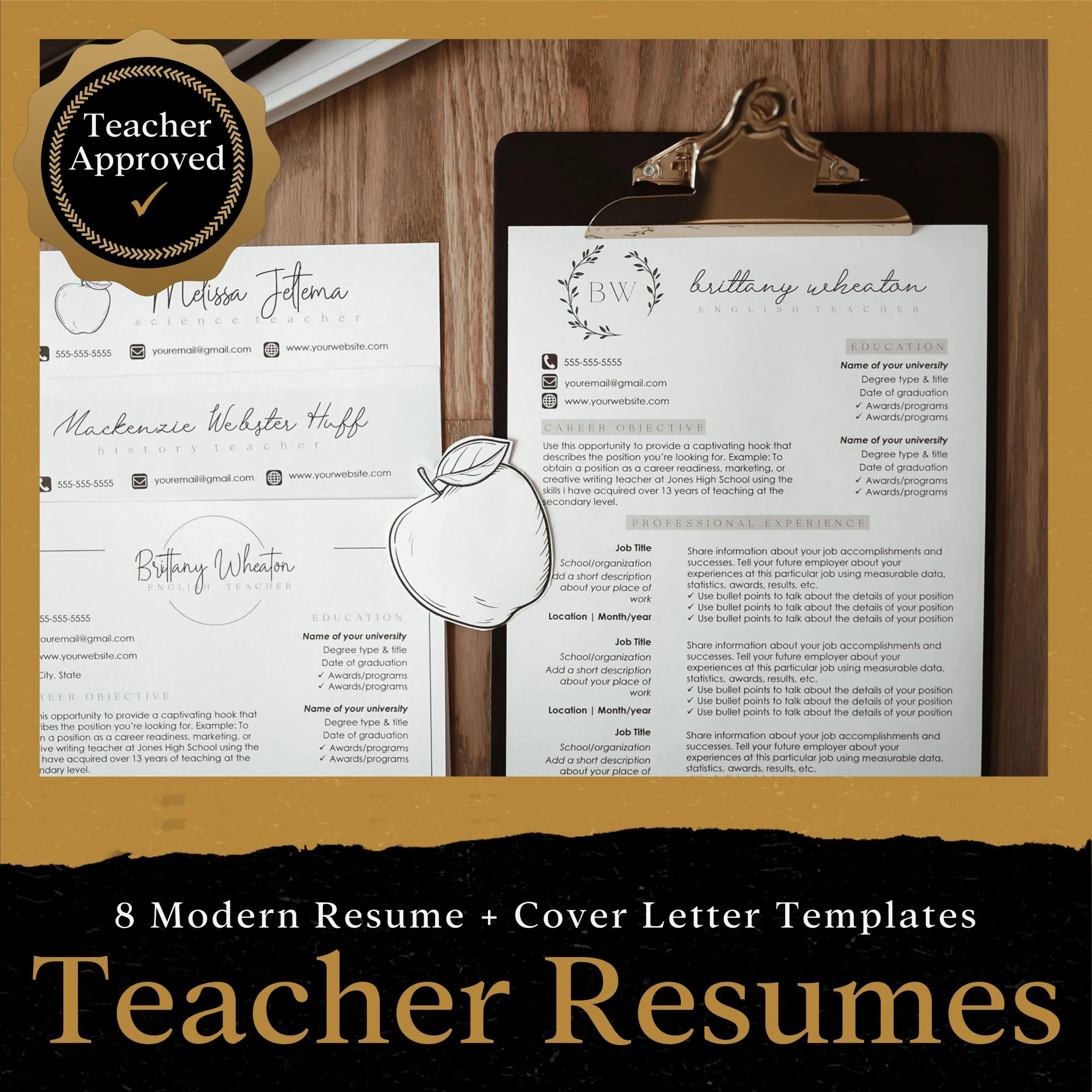Why a Teacher Cover Letter is Essential
A teacher cover letter is more than just a formality; it’s your first opportunity to make a lasting impression on a potential employer. In a competitive job market, a well-crafted cover letter can set you apart from other candidates. It provides a platform to showcase your personality, teaching philosophy, and suitability for the specific role and school. The cover letter allows you to elaborate on the experiences and skills listed in your resume, connecting your qualifications to the needs of the school district and demonstrating your enthusiasm for the position. Ignoring this important document means missing a crucial chance to highlight your unique strengths and secure an interview. A compelling cover letter is your personal introduction, your chance to tell your story and why you’re the perfect fit for the job.
Highlighting Your Skills
Begin by identifying the key skills the school is seeking in a teacher. Then, within your cover letter, provide specific examples of how you’ve demonstrated these skills in past roles. Skills can include classroom management, curriculum development, differentiated instruction, communication with parents, and the use of technology in the classroom. Instead of simply listing your skills, offer concrete examples. For example, instead of saying ‘I have strong classroom management skills,’ you might write, ‘In my previous role, I implemented a positive behavior support system that reduced disruptive behavior by 40%.’ This approach offers concrete evidence to back up your claims, making your skills more compelling. Consider the specific needs of the school and tailor your examples to align with their requirements, emphasizing any specialized skills or experience that makes you a standout candidate.
Quantifying Your Achievements
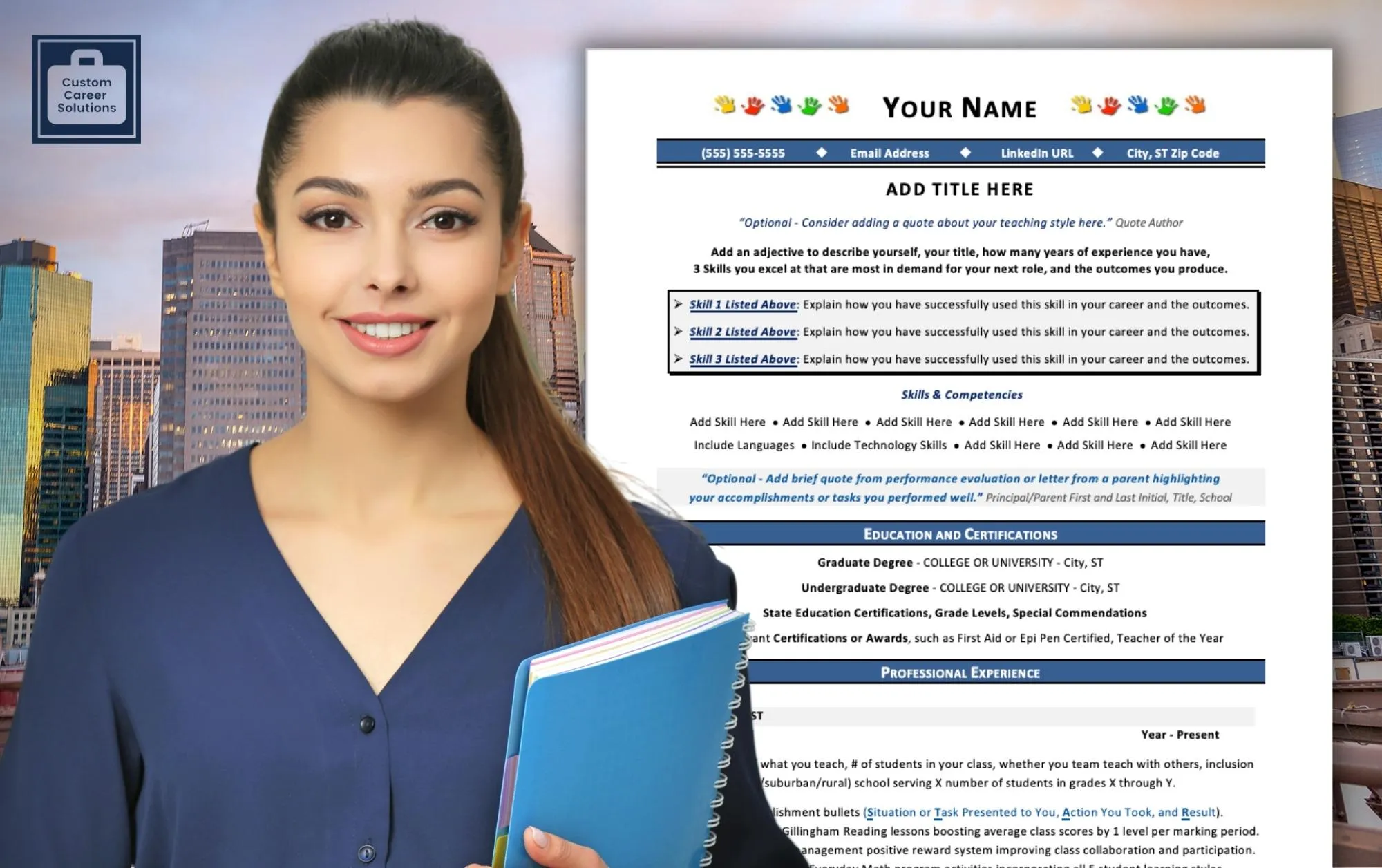
Show, don’t just tell. Use data to showcase the impact of your teaching. Providing specific numbers and quantifiable results is a powerful way to demonstrate your effectiveness as an educator. Instead of stating ‘I improved student performance,’ quantify your achievements by saying something like ‘My students’ reading scores improved by an average of 15% in the first year, according to standardized testing.’ Similarly, highlight the positive impact of your initiatives and the contributions you made to any school or department. If you’ve led a successful project, mention how it impacted student engagement, or how your contributions led to the school obtaining additional funding or recognition. These types of metrics go beyond simple descriptions and underscore your ability to achieve real-world results. Quantifiable achievements add credibility and make a lasting impact on the reader.
Tailoring to the School
Every school is different. Research the school, understand its mission, and demonstrate that you are a good fit. It’s essential to customize your cover letter for each position, rather than using a generic template. Visit the school’s website, read about their programs, and find out about their values and goals. Reference these specific aspects in your cover letter, showing that you understand their needs and what they are looking for in a teacher. For example, if the school emphasizes project-based learning, highlight your experience with this teaching method. If they have a specific focus on technology integration, discuss your proficiency with relevant tools and platforms. The goal is to convince the hiring committee that you’re genuinely interested in their school and that your skills and values align with their environment. Show you’ve invested time in understanding what makes the school unique.
Demonstrating Passion and Personality
Your cover letter is your chance to let your personality shine. Schools want teachers who are passionate about their work and are excited to connect with students. Use a tone that conveys your enthusiasm for teaching and your interest in the specific opportunity. While maintaining a professional demeanor, express your genuine passion for education and working with students. Tell a short anecdote about what inspires you about teaching, or the moments that have made you feel most fulfilled. Express your commitment to creating a positive and engaging learning environment. Remember that your cover letter represents you as a whole person and showcases your values. By expressing your passions, you show the hiring committee that you are not just qualified but also a person who is going to bring enthusiasm and positivity to their school community.
Proofreading and Formatting
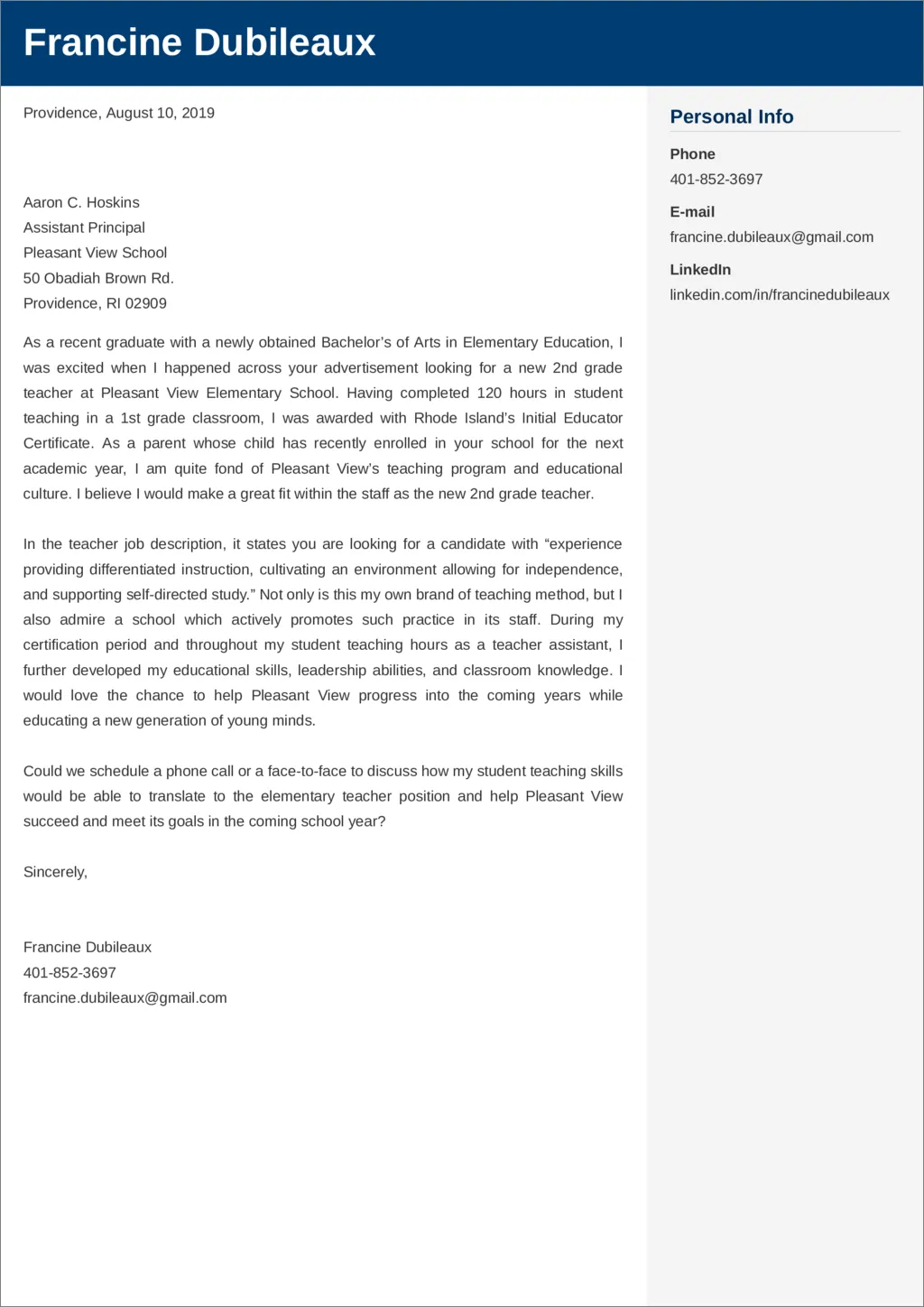
Presentation is critical. A polished cover letter that is free of errors shows you’re detail-oriented and professional. Carefully proofread your letter for any grammatical errors, typos, or punctuation mistakes. Have a friend or colleague review it as well. Poorly written cover letters make a negative impression, damaging the overall quality of the application. Use a clean and professional font, such as Times New Roman, Arial, or Calibri. Make sure your letter is well-formatted with appropriate spacing between paragraphs. Maintain consistent formatting throughout the entire document, including the header, and the signature section. Ensure that the letter is easy to read and visually appealing. Proper proofreading and formatting signal attention to detail, contributing to a positive perception of your application.
Cover Letter Structure for Teachers
Header Information
Start with a professional header that includes your contact information and the date. Include your full name, address, phone number, and email address. If you have a professional website or online portfolio, include the link in your header. Include the date, and if you know the hiring manager’s name, include the hiring manager’s name and title, as well as the school’s address.
Opening Paragraph
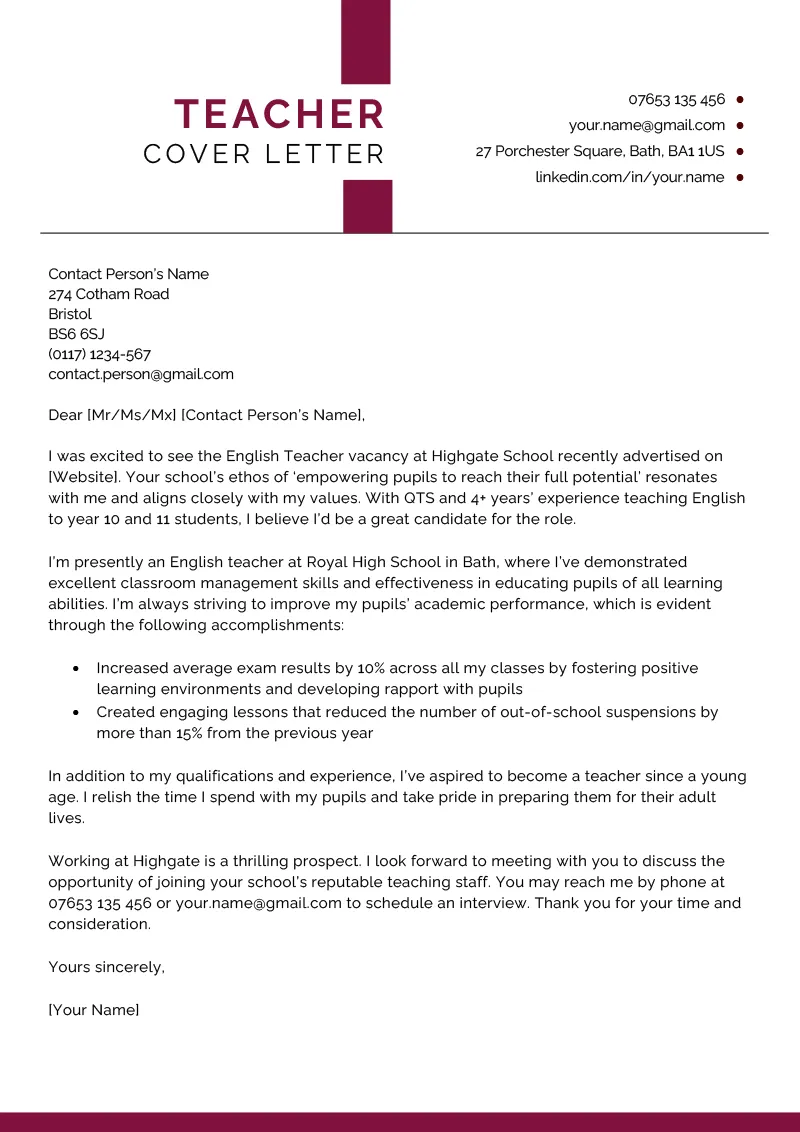
Your opening paragraph should immediately grab the reader’s attention and state the purpose of your letter. Mention the specific position you’re applying for, and where you found the job posting. Briefly state why you’re a good fit. Show enthusiasm and a desire to be considered for the role. Your opening should be concise, and immediately convey your interest.
Body Paragraphs
This section is the meat of your cover letter, where you showcase your skills, experience, and qualifications. Use the body paragraphs to elaborate on your achievements and highlight key skills and experiences. Provide specific examples that demonstrate your teaching abilities, and align with the requirements of the job description. Make connections between your experiences and the needs of the school, focusing on the value you bring to the table. Use a confident and enthusiastic tone. Avoid simply repeating information from your resume; expand on those points, adding depth and personality to the letter.
Closing Paragraph
Conclude your cover letter with a strong closing paragraph. Reiterate your interest in the position and express your gratitude for the opportunity. Reiterate your key qualifications, and show that you are looking forward to hearing back from the hiring committee. Include a call to action; for example, you could state that you’re available for an interview at their earliest convenience. End with a professional closing, such as ‘Sincerely’ or ‘Best regards,’ followed by your typed name.
Key Content to Include
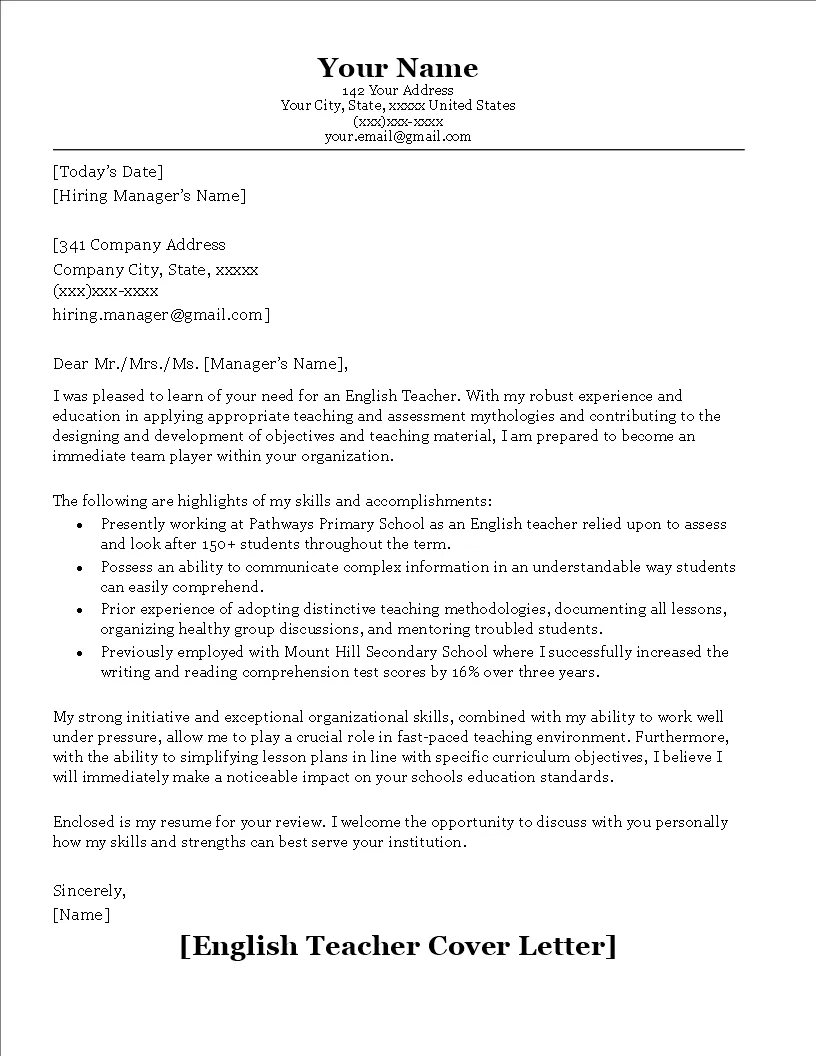
Teaching Experience
Provide an overview of your teaching experience. Briefly describe your past roles, schools, grade levels taught, and subjects. Highlight your experience with different teaching methods, classroom management strategies, and student assessments. If you’ve worked with diverse student populations or have experience with special education, be sure to mention this. Include the dates of your employment and any significant accomplishments or contributions from each role. Use action verbs to describe your responsibilities and achievements. This section should give the hiring committee a clear understanding of your professional background.
Education and Certifications
List your educational background, including degrees earned, institutions attended, and graduation dates. Specifically mention your teaching certifications and any endorsements. Be sure your certifications are up-to-date and align with the requirements of the position and state. Highlight any specialized training or certifications you possess that are relevant to the role. This section is essential for confirming your qualifications and your eligibility to teach in the school system.
Relevant Skills
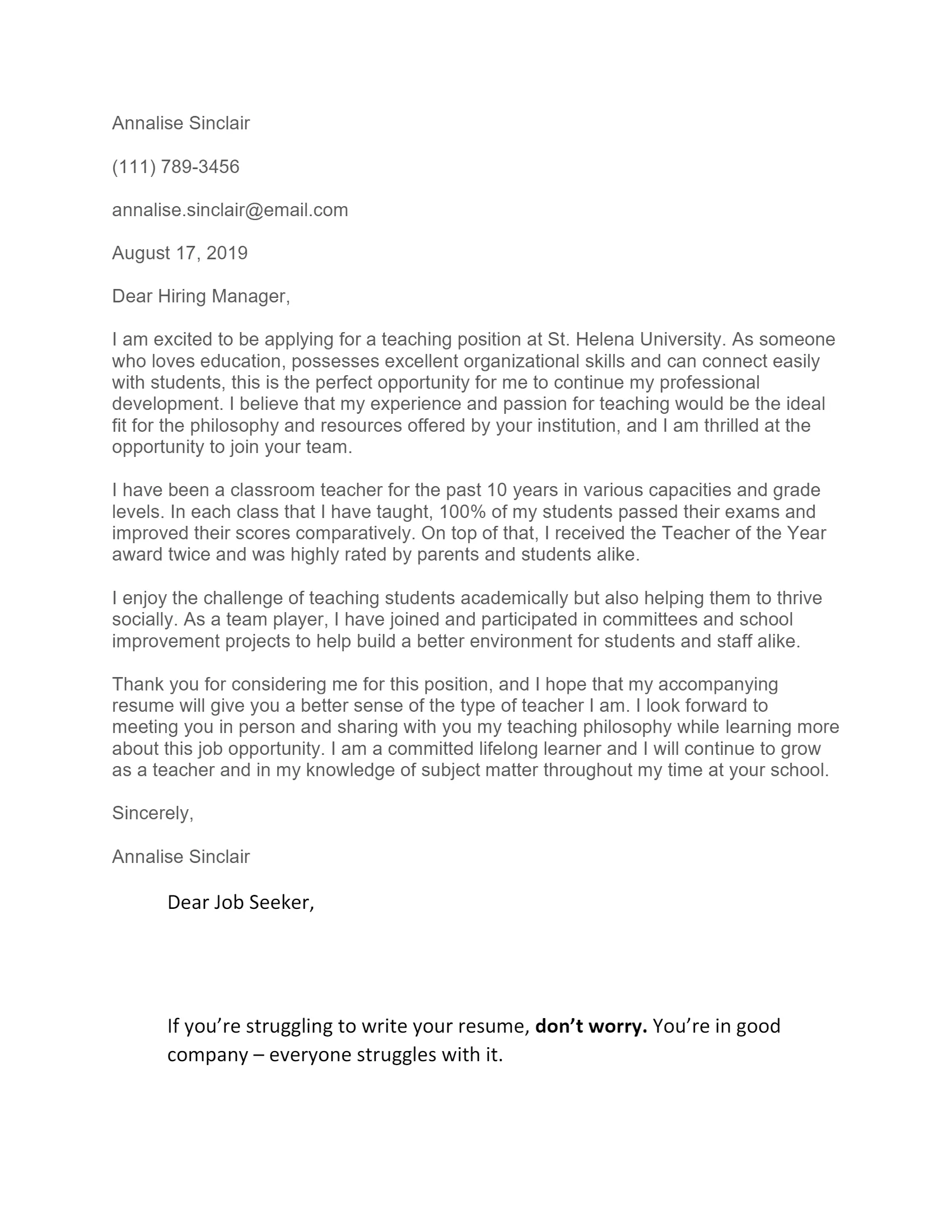
Emphasize the skills that make you a successful teacher. This includes instructional strategies, classroom management, curriculum development, and communication skills. Consider technology integration, differentiated instruction, and data analysis. Reference the skills listed in the job description and tailor your cover letter to match these. Back up your skills with concrete examples from your experience. Show how you’ve used these skills to improve student outcomes and create a positive learning environment. Focus on those skills the school has deemed important.
Professional Development
Highlight any professional development activities you’ve completed. Include any workshops, conferences, or training programs you’ve attended that have enhanced your teaching skills. Mention any certifications, memberships, or other professional affiliations that demonstrate your dedication to continued learning and professional growth. This section showcases your commitment to staying current with best practices in education, and a willingness to expand on skills and knowledge.
Cover Letter Mistakes to Avoid
Generic Cover Letters
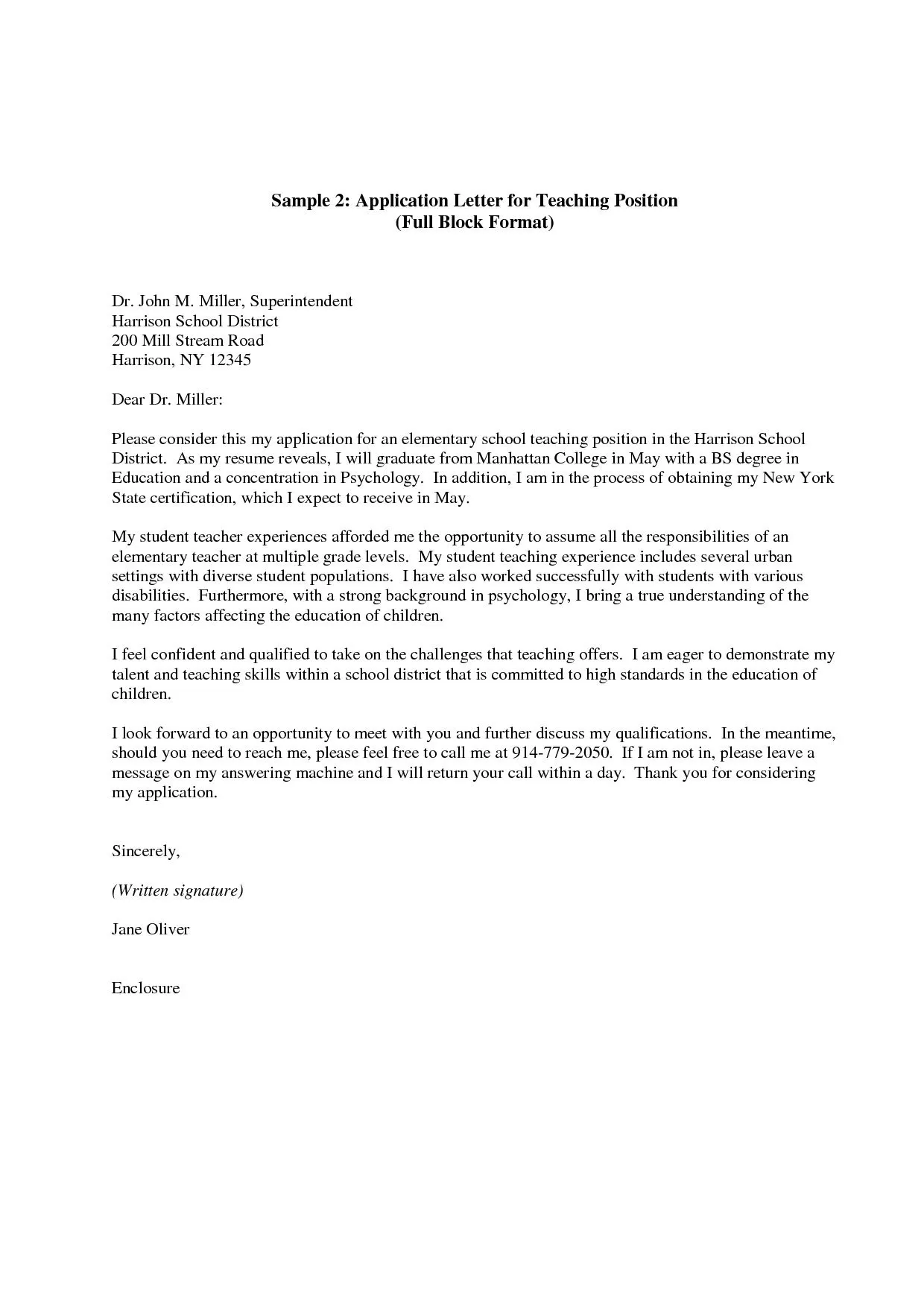
Avoid using a generic cover letter that isn’t tailored to the specific school or position. Generic letters show a lack of interest and a lack of effort. Tailor each cover letter to match the specific requirements and values of each school and the job posting. Research the school and highlight how your skills and experience align with their needs and mission. Make sure you address the hiring manager by name, and demonstrate your specific interest in the role and school.
Typos and Grammatical Errors
Typos and grammatical errors can undermine your credibility and professionalism. Proofread your cover letter carefully before submitting it. Use spell-check and grammar-check tools, but don’t rely on them completely. Have a friend or colleague review your letter for any errors. A flawless cover letter makes a strong impression, whereas errors can distract the reader and diminish your chances.
Focusing on Yourself Too Much
Avoid a cover letter that is too self-centered, focusing more on your needs than on how you can contribute to the school. Focus on how your skills, experience, and passion align with the school’s needs. Frame your accomplishments in a way that emphasizes the benefits you can offer to the school, students, and community. Show how you can help the school achieve its goals, and how you can provide value. Emphasize how you can make a difference for their students.
Not Proofreading
Failing to proofread your cover letter is a common mistake that can cost you the job. Typos, grammatical errors, and formatting issues can reflect poorly on your attention to detail and professionalism. Proofread your cover letter multiple times, and consider having someone else review it. A polished and error-free cover letter shows respect for the hiring process and demonstrates your dedication to excellence.
Finalizing and Submitting Your Cover Letter
Before submitting your cover letter, review all the sections to ensure that everything is correct. Proofread your cover letter carefully for any errors. Make sure that the letter is in the correct format. Submit your cover letter as a PDF file unless the school specifically requests another format. Follow all the instructions in the job posting. Use the same format for your cover letter and resume. By carefully following these steps, you can increase your chances of securing an interview. A great cover letter will help you stand out from the competition and land you the job you want.
